The proliferation of online casinos has opened a new world of gambling where bettors can experience the thrill of gaming right from the comfort of their homes. What’s more intriguing is the variety of games offered by these platforms, ranging from table games to slots and live dealer games. One critical factor to consider when choosing a game to play is the house edge, which refers to the mathematical advantage that a game has over players over time. In essence, the lower the house edge, the better the odds for the player. So, let’s delve into the world of online casino games with the lowest house edge.
Blackjack: The Classic Low House Edge Game
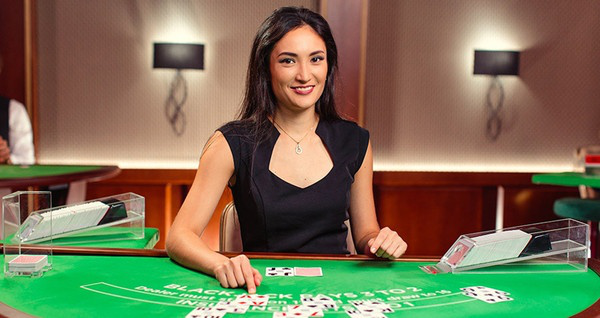 Blackjack has always been renowned for its low house edge, with figures typically ranging from 0.5% to 1.5% in many online casinos, depending on the specific game rules. This figure is, however, based on perfect strategy play, which means that players need to make the best decision on every hand based on probability.
Blackjack has always been renowned for its low house edge, with figures typically ranging from 0.5% to 1.5% in many online casinos, depending on the specific game rules. This figure is, however, based on perfect strategy play, which means that players need to make the best decision on every hand based on probability.
Blackjack, often known as “21,” is one of the most popular and recognized casino games worldwide. This universally acknowledged game has a well-deserved reputation for offering players some of the best odds of winning among casino games. Its appeal largely stems from its low house edge, its relatively straightforward rules, and the degree of skill involved in playing the game optimally.
The basic rules of Blackjack are easy to grasp. The game pits players against the dealer. Both the player and the dealer attempt to get a hand as close to 21 as possible without going over, known as “busting.” The face cards – Kings, Queens, and Jacks – are all worth 10 points, Aces can be worth either 1 or 11, and all other cards are worth their numerical value. If a player’s hand value exceeds 21, they lose their bet immediately. On the other hand, if they have a higher hand value than the dealer at the end of the round (without exceeding 21), they win.
A distinct aspect of Blackjack that contributes to its low house edge is the use of optimal strategy. Unlike many other casino games where luck is the only determinant of the outcome, Blackjack requires a mixture of luck and skill. Skilled players can considerably reduce the house edge by using what is known as basic strategy, a set of instructions that advises the best action for any given hand against any possible dealer upcard.
The basic strategy is based on mathematical probabilities and was first introduced by Roger Baldwin in 1956 in a paper titled “The Optimum Strategy in Blackjack.” The fundamental premise of the basic strategy is that there are some actions (hit, stand, double down, split, or surrender) that will lead to more long-term gains than others depending on the player’s hand and the dealer’s upcard. This means that by following the basic strategy, a player can minimize their losses and increase their chances of winning in the long run.
One key element of the basic strategy is the concept of “soft” and “hard” hands. A “soft” hand includes an Ace valued at 11, while a “hard” hand either doesn’t include an Ace or includes an Ace valued at 1. Depending on whether a hand is soft or hard, the basic strategy recommends different actions. For instance, with a soft 15 or 16 and the dealer showing a high card, the basic strategy recommends players to hit. On the other hand, with a hard 15 or 16, it may recommend players to stand if the dealer is showing a low card.
While using the basic strategy can significantly reduce the house edge, it is important to remember that it does not guarantee a win every time. Instead, it enhances the player’s chance of winning over time. The actual results in a single session can still vary greatly due to the inherent variance in any form of gambling.
In addition to the basic strategy, card counting is another technique that can further reduce the house edge in Blackjack. This involves tracking the ratio of high cards to low cards left in the deck. When there are more high cards left, the player has a greater chance of receiving a “natural” blackjack (an Ace and a 10-point card as their initial two cards), which pays out more than a regular win (3:2 in most casinos, compared to the 1:1 payout for other wins). However, card counting requires a high degree of skill and concentration, and it’s also frowned upon by casinos, often leading to the banishment of identified card counters. Read more about the blackjack house edge here.
Baccarat: A High-Roller Favorite
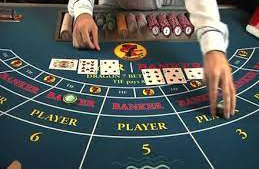 Baccarat is a game of chance where players can bet on the Player, the Banker, or a Tie. The house edge varies depending on the bet: the Banker bet has the lowest house edge at approximately 1.06%, the Player bet has a slightly higher edge at about 1.24%, and the Tie bet has a significantly higher house edge, often above 14%.
Baccarat is a game of chance where players can bet on the Player, the Banker, or a Tie. The house edge varies depending on the bet: the Banker bet has the lowest house edge at approximately 1.06%, the Player bet has a slightly higher edge at about 1.24%, and the Tie bet has a significantly higher house edge, often above 14%.
Baccarat stands as one of the most appealing games for players, especially for high roller casino players, boasting a low house edge compared to many other casino games. With the right strategy and understanding of the game, Baccarat can be an excellent option for both seasoned gamblers and novices alike who are looking to maximize their chances of winning.
Baccarat is a card game played between two hands: the “player” and the “banker.” Each baccarat coup (round of play) has three possible outcomes: “player” (player has the higher score), “banker,” and “tie.” The primary objective is to bet on which hand will have a point value closest to nine.
When it comes to the house edge, baccarat offers some of the most favorable odds in the casino. The ‘Player’ bet has a house edge of about 1.24%, while the ‘Banker’ bet (despite a commission on winnings) is at a slightly lower 1.06%. These percentages are based on the game being played with eight decks, which is standard in many online casinos. It’s worth noting that the ‘Tie’ bet comes with a house edge around 14.36%, significantly higher than the ‘Player’ or ‘Banker’ bets. Thus, betting on a ‘Tie’ is generally considered a less strategic move due to its unfavorable odds.
The low house edge of Baccarat partially owes its roots to the limited number of potential outcomes. Unlike games such as Blackjack or Poker, where the variety of combinations can significantly impact the game’s result, Baccarat outcomes are predominantly binary, ‘Player’, ‘Banker’, or the rare ‘Tie’. This level of simplicity can help keep the house edge low.
Furthermore, the house edge in Baccarat remains constant regardless of how many times you play. In other games, the odds can shift over time, particularly in games that include a skill element or where player decisions can impact the outcome. In Baccarat, each hand is an independent event, which means previous hands do not affect the house edge on future hands. Therefore, the house edge remains the same regardless of the duration or number of games played.
One critical aspect to understand is that while the ‘Banker’ bet offers a lower house edge, it is subject to a commission usually around 5% that the casino takes from your winnings if the ‘Banker’ bet wins. This commission is the casino’s way of maintaining its edge over the game. However, even with this commission, the ‘Banker’ bet still tends to offer better value over the long run due to the lower house edge.
Craps: Dice Game with Diverse Bets
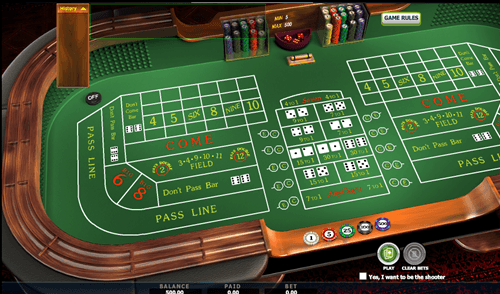
Craps is a dice game with a wide array of bets, each with different odds. The house edge varies significantly depending on the type of bet. The best bets are the Pass Line and Don’t Pass Line bets, both of which typically have a house edge of around 1.41% and 1.36%, respectively. You can read our dedicated guide to craps house edge by following this link.
For craps, different bets carry different house edges, making it a game of strategic betting. With a little knowledge, players can effectively reduce the house edge to their advantage and enhance their chances of a profitable game.
Craps Bets with Lowest House Edge
- Pass Line / Come Bet
The Pass Line is the most basic bet in craps, often considered the cornerstone of the game. It carries a house edge of 1.41%, one of the lowest among casino games. A player wins this bet if the first roll (come out roll) is a 7 or 11, and loses if it is a 2, 3, or 12. Any other number establishes the ‘point.’ If the point is rolled again before a 7, the player wins. If a 7 is rolled before the point, the player loses. The Come Bet operates under the same rules but is placed after the point is established.
- Don’t Pass / Don’t Come Bet
Opposite to the Pass Line / Come Bet, the Don’t Pass / Don’t Come bet offers even better odds to the players with a house edge of just 1.36%. The player wins if the come out roll is a 2 or 3 (12 results in a tie in many casinos), and loses if it is a 7 or 11. If a point is established and then a 7 is rolled before the point, the player wins. This bet may not be popular, as essentially, you are betting against the shooter.
- Odds Bet
Odds bets, namely Pass Odds and Come Odds, as well as Don’t Pass Odds and Don’t Come Odds, are unique as they are the only bets in the casino that have no house edge; the casino pays true odds for these bets. These bets can only be placed after a point has been established and are often “backed up” to an initial Pass, Don’t Pass, Come, or Don’t Come bet.
For Pass / Come Odds, the bet wins if the point is rolled before a 7. For Don’t Pass / Don’t Come Odds, the bet wins if a 7 is rolled before the point. The payout varies depending on the point: 2:1 on points of 4 and 10, 3:2 on points of 5 and 9, and 6:5 on points of 6 and 8.
- Place 6 or Place 8 Bet
Another option for players is the Place 6 or Place 8 bet. In these bets, the player is wagering that a 6 or 8 (depending on which bet they make) will be rolled before a 7. This bet pays 7:6 and has a relatively low house edge of 1.52%.
Strategies to Lower the House Edge in Craps
While the above bets offer low house edges, some strategies can further increase your chances of winning. One of the most effective strategies is to make the maximum Odds bet. While the initial Pass / Don’t Pass or Come / Don’t Come bet has a small house edge, the Odds bet that follows has no house edge. The larger you make your Odds bet relative to your initial bet, the more the overall house edge approaches zero.
Also, combining the Pass / Don’t Pass or Come / Don’t Come bet with the respective Odds bet can give you the best chances. Remember, the goal isn’t necessarily to predict the outcome of every roll but to make bets with the best statistical chance of success.
Video Poker: Where Strategy Matters
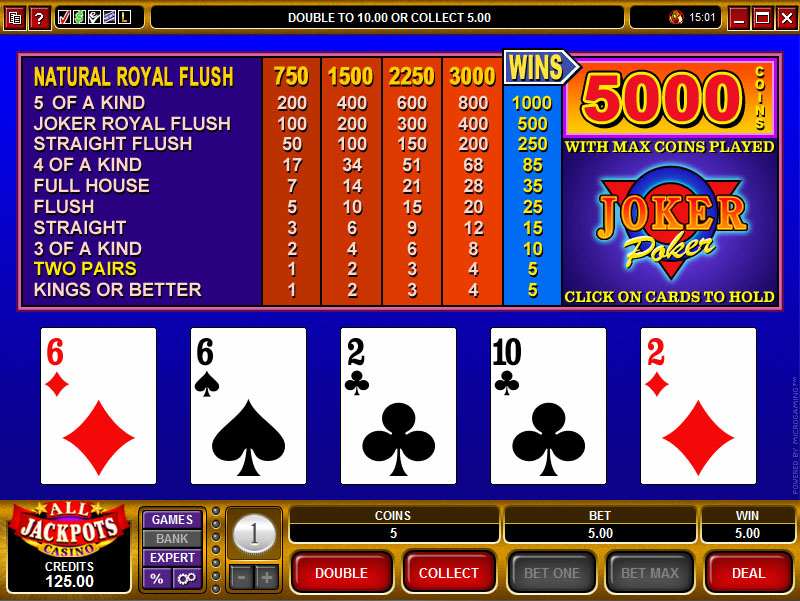 Video poker is another online casino game that, when played with an optimal strategy, can have a very low house edge, often less than 1%. Games like “Jacks or Better” and “Deuces Wild” are particularly popular and offer good odds, with the right strategy.
Video poker is another online casino game that, when played with an optimal strategy, can have a very low house edge, often less than 1%. Games like “Jacks or Better” and “Deuces Wild” are particularly popular and offer good odds, with the right strategy.
One of the primary appeals of video poker is its relatively low house edge, which refers to the statistical advantage the casino holds over the player. In most casino games, the house edge is fixed and cannot be influenced by the player’s decisions. However, in video poker, the house edge can be significantly reduced, even potentially turning in favor of the player, with the use of optimal strategy.
A game’s house edge is typically represented as a percentage. In video poker, the house edge varies based on the specific variation of the game, the pay table, and the player’s ability to use optimal strategy. For example, a typical game of Jacks or Better, a popular variation of video poker, has a house edge of around 0.46% when played with perfect strategy, making it one of the most favorable games in the casino for the player.
Unlike many casino games, video poker is not a game purely of chance. Each decision a player makes influences the outcome of the game. This means that players who are willing to invest the time and effort to learn optimal video poker strategy can significantly reduce the house edge, and in some cases, even swing it in their favor.
This strategy revolves around knowing which cards to hold and which to discard in any given situation. Each video poker variant has an optimal strategy that can be used to minimize the house edge. For example, in a game of Jacks or Better, if a player is dealt two pairs, the optimal strategy would be to hold both pairs and discard the fifth card in hopes of getting a full house.
Learning optimal video poker strategy typically involves studying strategy charts or using a video poker trainer, tools that provide real-time feedback on decision-making. These tools can help players understand the probabilities associated with different hands and how those probabilities change based on the cards that are held and discarded.
While strategy plays a significant role in video poker, it’s also important to understand the game’s pay tables. Pay tables outline the payouts for various hands and are key to determining a game’s potential return and house edge. Each variant of video poker will have different pay tables, and these can even vary between individual online casinos.
Jacks or Better, for example, typically uses a “9/6” pay table (a Full House pays 9 times the bet and a Flush 6 times), which offers a return to player (RTP) of 99.54% with optimal strategy. This means the house edge for this game is just 0.46%, making it one of the best games in the casino for players looking to maximize their chances of winning.
However, not all Jacks or Better games use the 9/6 pay table. Some casinos offer “8/5” or “7/5” games, which reduce the payouts for Full House and Flush. This increases the house edge and reduces the RTP. Players should always seek out the best pay tables to ensure they’re getting the best possible odds.
Another variation with a low house edge when played with optimal strategy is Deuces Wild. In a full-pay Deuces Wild game, the RTP can be over 100%, meaning the player has a slight edge over the house. However, full-pay Deuces Wild games are rare, and most casinos offer games with slightly lower pay tables, which increase the house edge.
The availability of different video poker games will vary from one online casino to another. Some online casinos offer a wide variety of video poker games, including several different variants and a range of pay tables. Others may only offer a few different games. It’s always a good idea to review the available options and choose a game that offers a favorable pay table and a low house edge. Learn more about the video poker house edge.
European Roulette: A Simple Game with Good Odds
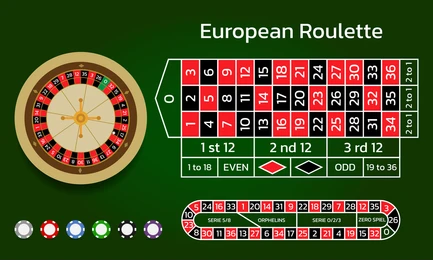 In terms of roulette variations, European roulette offers better odds to players than its American counterpart due to the lack of a double-zero pocket. The house edge in European roulette is approximately 2.7%.
In terms of roulette variations, European roulette offers better odds to players than its American counterpart due to the lack of a double-zero pocket. The house edge in European roulette is approximately 2.7%.
European Roulette is a classic casino game with a rich history, simple rules, and favorable odds compared to many other gambling options. Whether you’re a seasoned casino-goer or a newcomer, understanding the fundamentals of this thrilling game can dramatically enhance your casino experience.
The game of European Roulette was born in France in the 18th century. It quickly spread throughout Europe and later the world, captivating gamblers with its combination of luck, strategy, and the suspenseful spin of the wheel. Today, European Roulette remains one of the most popular games in both physical and online casinos.
The layout of the European Roulette wheel and table is the first aspect that distinguishes it from other types of roulette, such as American Roulette. The European wheel has 37 slots numbered from 0 to 36, whereas the American wheel has an extra 00 slot, making a total of 38 slots. This difference significantly impacts the odds of the game, which we will delve into later.
The betting area, also known as the roulette table layout, includes the numbers from the wheel and additional betting options. The table layout has 12 rows and three columns with the numbers 1 to 36, and the top or bottom (depending on the design) includes the 0. The rest of the layout provides the opportunity for various group bets, such as odd/even, red/black, high/low, columns, and dozens.
Playing European Roulette is straightforward. The game begins with players placing their bets on the table. You can place different types of bets, each offering varying odds and payouts. Straight-up bets are placed on a single number and have the highest payout of 35:1 but also the longest odds. Other betting options include split bets (two numbers), street bets (three numbers), corner bets (four numbers), line bets (six numbers), column and dozen bets (12 numbers), and even money bets like red/black, high/low, and odd/even.
Once all bets are placed, the croupier spins the roulette wheel and tosses in a small ball in the opposite direction of the wheel’s rotation. As the wheel slows down, the ball drops into one of the numbered slots. If the number, or range of numbers, or the color you bet on includes the slot where the ball fell, you win.
The odds in European Roulette are notably better than many other casino games. This advantage primarily stems from the single zero used in the game. When comparing with American Roulette, the absence of the double zero greatly reduces the house edge. In European Roulette, the house edge is about 2.7%, while in American Roulette, the house edge almost doubles to about 5.26%. Simply put, in the long run, you’re statistically likely to lose less money while playing European Roulette than American Roulette.
For example, if you bet on a single number in European Roulette, the chance of winning is 1 in 37 because there are 37 slots. If the ball lands on your number, you receive a payout of 35:1, and with your original bet returned, you get 36 units back. In contrast, in American Roulette, the odds are 1 in 38 but the payout remains 35:1, making it a less favorable bet.
European Roulette also offers the “En Prison” and “La Partage” rules, which can further reduce the house edge on even money bets. The “En Prison” rule allows your bet to stay on the table for the next round if the ball lands on zero. If your bet wins on the next spin, you get your original bet back. The “La Partage” rule, on the other hand, means you only lose half of your even money bet if the ball lands on zero. Both these rules effectively cut the house edge on even money bets down to 1.35%.
Wrap Up
Remember, a lower house edge doesn’t guarantee wins – it just increases the chances of coming out ahead over time. It’s important to understand the rules and strategies of the games you choose to play, and always gamble responsibly. The games mentioned above – Blackjack, Baccarat, Craps, Video Poker, and European Roulette – offer the best odds in the house and can provide hours of entertainment along with the potential for great winnings. Always remember that the ultimate goal is to have fun and play within your means. Good luck at the tables!
